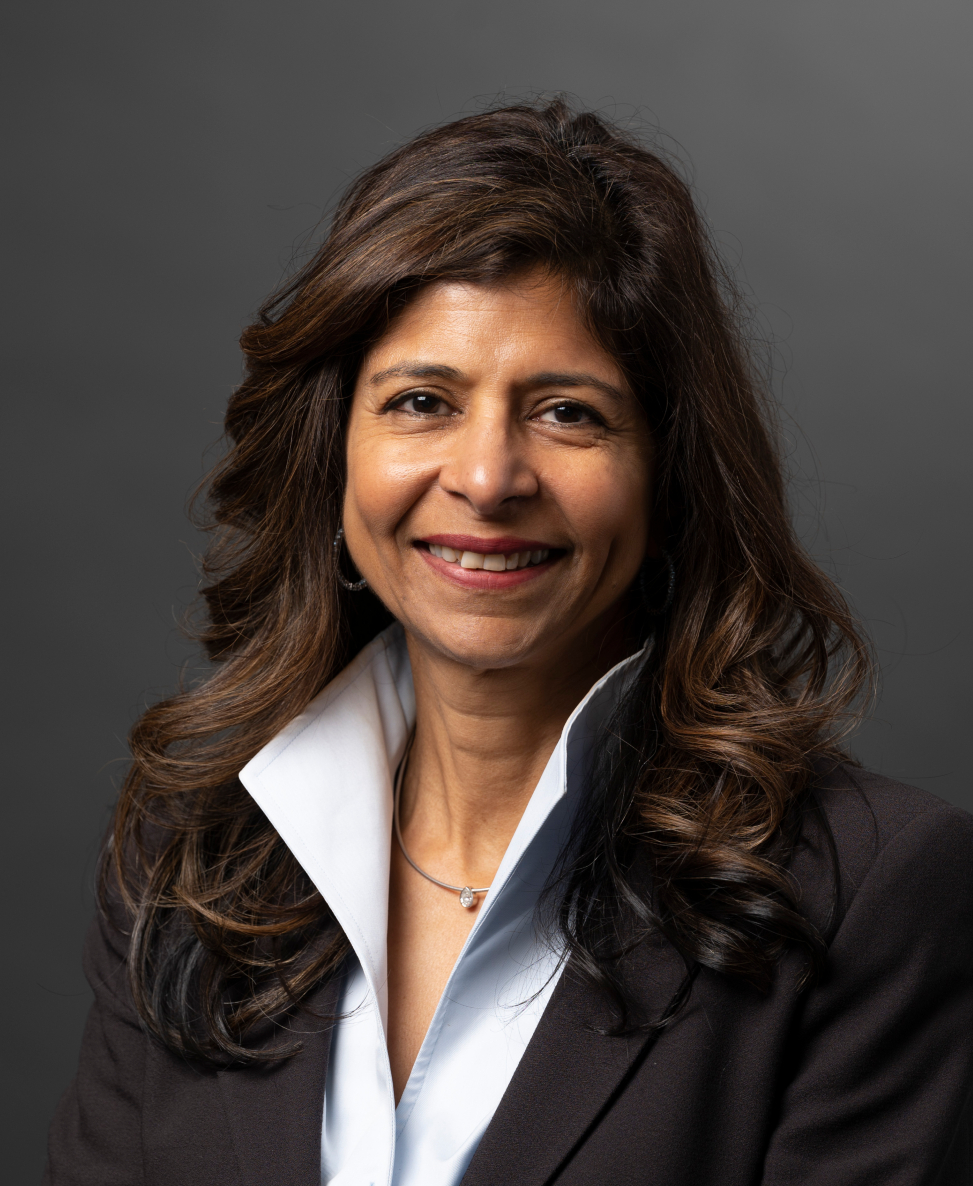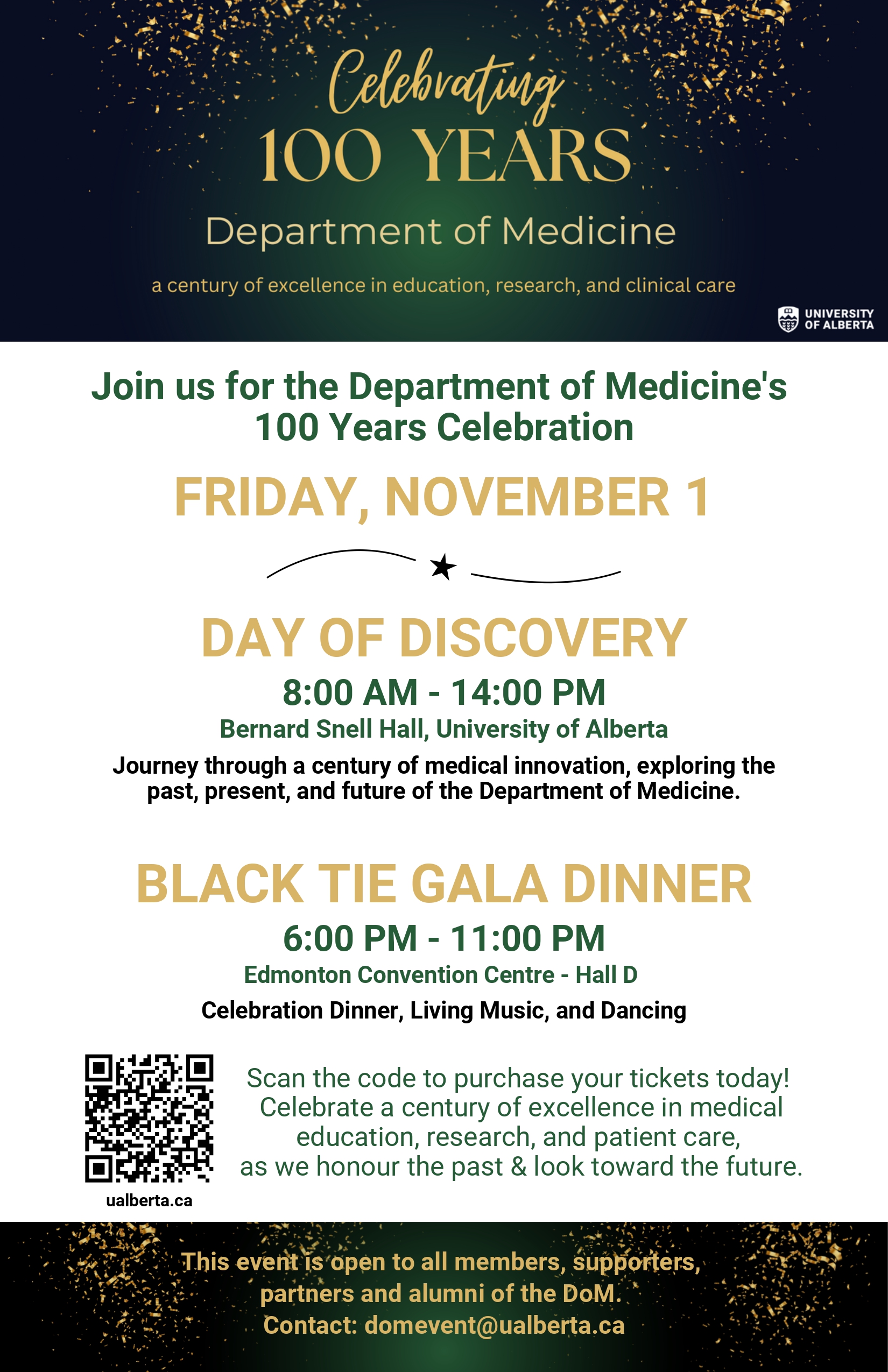Department of Medicine celebrates a century of excellence
21 October 2024

Department of Medicine chair Narmin Kassam
This year, the Department of Medicine in the University of Alberta's Faculty of Medicine & Dentistry celebrates 100 years of advancing medical education, research and patient care.
The department’s centennial is an opportunity to highlight the physicians, researchers, students, alumni and administrators who have contributed to its legacy. From pioneering new treatments to training world-class physicians, the department has always been driven by a passion for improving lives, responding to the health needs of diverse communities and supporting students to become the health leaders of tomorrow.
Early days
The department’s roots trace to 1913, when the U of A’s School of Medicine began and the first classes were enrolled. In 1924, the Department of Medicine was officially established under the leadership of Egerton. L. Pope, a neurologist who served as its first head. At that time, the University Hospital, previously known as Strathcona Hospital, became a centre for clinical training and medical practice.
From those early days, the department has been committed to training physicians and advancing medical knowledge. In the 1920s, biochemistry professor James Collip played a key role in refining insulin for safe human use, which led to the clinical use of insulin in diabetes patients, a major world breakthrough. This set the stage for the U of A to later become a global leader in diabetes research.
Throughout its 100 years, the department has adapted to meet the changing health-care needs of Albertans. The 1930s and ’40s brought new challenges with the Great Depression, Second World War and the rise of infectious diseases such as tuberculosis. The department’s efforts, alongside the passage of the Tuberculosis Act and the introduction of new drugs, helped patients across Alberta receive life-saving treatment.
1950s and ’60s: A period of growth and specialization
In the 1950s and ’60s, new divisions in cardiology, endocrinology and pulmonary medicine were created, allowing the department to further specialize its care and physician training.
In 1958, the department established Canada’s first internal medicine residency program, setting a national standard for postgraduate medical education. In 1962, the department achieved another major milestone when William Lakey, Lionel McLeod and Ray Ulan performed Canada’s first hemodialysis procedure.
In 1967, it took on a pioneering role in organ transplants, with the first cadaver kidney transplant performed at the University of Alberta Hospital.
The 1970s, ’80s and ’90s: Continued growth in research and clinical expertise
In the 1970s, the department saw many new divisions including gastroenterology, rheumatology and nephrology.
In 1981, the department secured a $1.2-million endowment to establish the Muttart Diabetes Research and Training Centre, cementing its leadership in diabetes care.
By 1999, the U of A had performed the first living donor liver transplant in Western Canada.
Leading cutting-edge research in the 21st century
The Edmonton Protocol for islet transplantation, developed in 2000 by James Shapiro and his team, offered new hope to patients with Type 1 diabetes. The 2007 opening of the Alberta Diabetes Research Institute and the Mazankowski Alberta Heart Institute marked another leap forward in the department’s ability to provide world-class care in diabetes and cardiovascular health.
Today, the department has more than 700 faculty members and offers training in 16 specialty programs, attracting top students, residents and researchers from around the world.
In recent years, the department has focused on addressing the challenges of health-care delivery in a rapidly changing world with key priorities and initiatives aimed at improving rural health-care access, integrating virtual care and addressing health inequities. Through partnerships with hospitals, Indigenous communities and health organizations, the department remains committed to delivering care that is equitable, accessible and responsive to the diverse health needs of all Albertans.
Narmin Kassam, chair of the Department of Medicine, reflects on the remarkable 100-year milestone.
"Every day, our physicians provide compassionate, high-quality care to the communities we serve, making a difference in the lives of countless patients. As we celebrate 100 years of excellence, I am more excited than ever about the possibilities that lie ahead. The future of medicine is full of promise, and with the talent, passion, and dedication of our extraordinary faculty and staff, we are poised to make even greater advancements in research, education and clinical care. I am beaming with pride to be a small part of this legacy," she says.
"Education is at the heart of everything we do. We believe in training the next generation of health-care leaders and ensuring that our students and residents are equipped to meet the evolving needs of the health-care system."
"Innovation in research is the key to advancing medical science. Over the last century, we have made remarkable strides in translating research into real-world solutions that improve health outcomes, and our future holds even more promise."
Honouring the past, embracing the future
 A full day of events will celebrate the achievements that have defined the department’s journey.
A full day of events will celebrate the achievements that have defined the department’s journey.
On Nov. 1, invited guests from across the department's community will gather at the Edmonton Convention Centre for a black-tie gala honouring its centennial. Guests will include Salma Lakhani, lieutenant governor of Alberta; Bill Flanagan, U of A president; Nizar Somji, chancellor; Verna Yiu, provost and vice-president (academic); and Brenda Hemmelgarn, dean of College of Health Sciences and the Faculty of Medicine & Dentistry. The department, along with faculty, emeritus faculty, former chairs, residents, students, alumni and support staff, will honour the pioneers who paved the way and celebrate the visionaries who will guide the department into the next century.
Also on Nov. 1, the department will host a Day of Discovery with compelling exhibits and displays highlighting pivotal milestones, breakthroughs and influential figures who have shaped the journey across a century. Visitors will gain profound insights into the department’s past, present and future as they chart a course toward continued excellence in research, education and clinical care. Former chairs Paul Armstrong, Barbara Ballermann, Jon Meddings and Tom Marrie will reflect on their experiences as department leaders and share insights into the legacy achieved over the years.